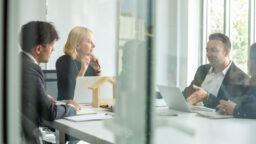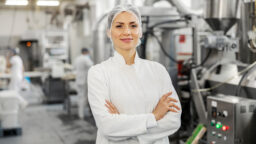When you look at the facts, the most profitable decision for the business will often run contrary to instinct or traditional ways of doing things. Our experience has shown that if you give an experienced supply chain planner a tool that caters to all planning complexities, he will quickly make faster and better decisions. Decisions that have a positive impact on the bottom line as well as enhancing customer service.
Essentially, planners need to be able to map out the entire supply chain with all its business constraints, business rules, and costs. Once the model and armed with the right tool, they are in a position to determine the most profitable plan to deliver to the defined forecast. This plan needs to consider all costs – from the sourcing of the bird through production, stock holding, and distribution. It should be an all-encompassing model that can effectively be used to drive cost out of the supply chain and, at the same time, increase customer service and profit margin (avoid price erosion).
Specific benefits of optimized supply chain planning for poultry producers
1. Clear visibility of surplus
The nature of the poultry business means that the company that can “balance the bird” without too much margin erosion (highly discounted sales) will do well. The key criterion for selling surplus at a decent price is to avoid fire sales. So you need to have a clear understanding of what the future surplus looks like considering the future demand and production output. It is important that when we are looking at future surplus we generally need to be looking at a primal level.
2. Optimal product / customer mix
Fresh products (as opposed to frozen) are generally delivered within 24 hours, and hence there can be a lot of running around, shuffling priorities and orders. So in the case of not being able to fulfil all demand – what’s the optimal mix to of profit and customer service? Which customers do you drop? Are there some customers who would accept a substitute product? Being able to deliver an optimal product/customer mix can make a huge difference. It’s about getting a clear understanding of the cost to serve.
3. Optimal product mix for production considering set-up time, available capacity and supply
In the case of Further Processed products, you generally get a longer planning horizon which gives you a better chance of optimizing the product mix. So based on the production resources availability and primal availability, what products should you produce on what day to minimize set-up time, considering the load and capacity? In the case of frozen products, you might have an option to both use frozen primal as well as freeze the finished product.
Of course, in producing the optimal plan, you would always consider the life of the products, and with a mix of fresh, FP, and frozen, this gives us options but, at the same time, more planning complexity.
4. Optimal storage cost
In the case where there are a number of storage points and where some of the warehouses are outsourced warehouses, you need to determine how you can best utilize the available warehouse structure while minimizing cost. This relies on a mix of understanding the optimal stock holdings as well as understanding the optimal inventory distribution.
5. Running different scenarios
Last but not least, one important point is that once the model is in place is to be able to test a number of different scenarios. Do you have enough capacity for the planned growth next year (from grow sheds, through hatchery, processing capacity, or warehousing)? Is it enough (and cost-effective) with overtime, or should you add a new shift? If you add another line, where is your breakpoint in terms of volume by different product categories? What about strategic decisions with regard to SKU and customer rationalization? Considering that optimal balancing of the bird is essential, which products and customers should you look at dropping, and what impact would that have on your bottom line – sales and margin/EBITA results?
If you’d like to know more about Optimity’s solutions for the poultry industry – get in touch, we’d love to talk.
Get all the latest industry trends, updates & news from Optimity
Our poultry customers


























